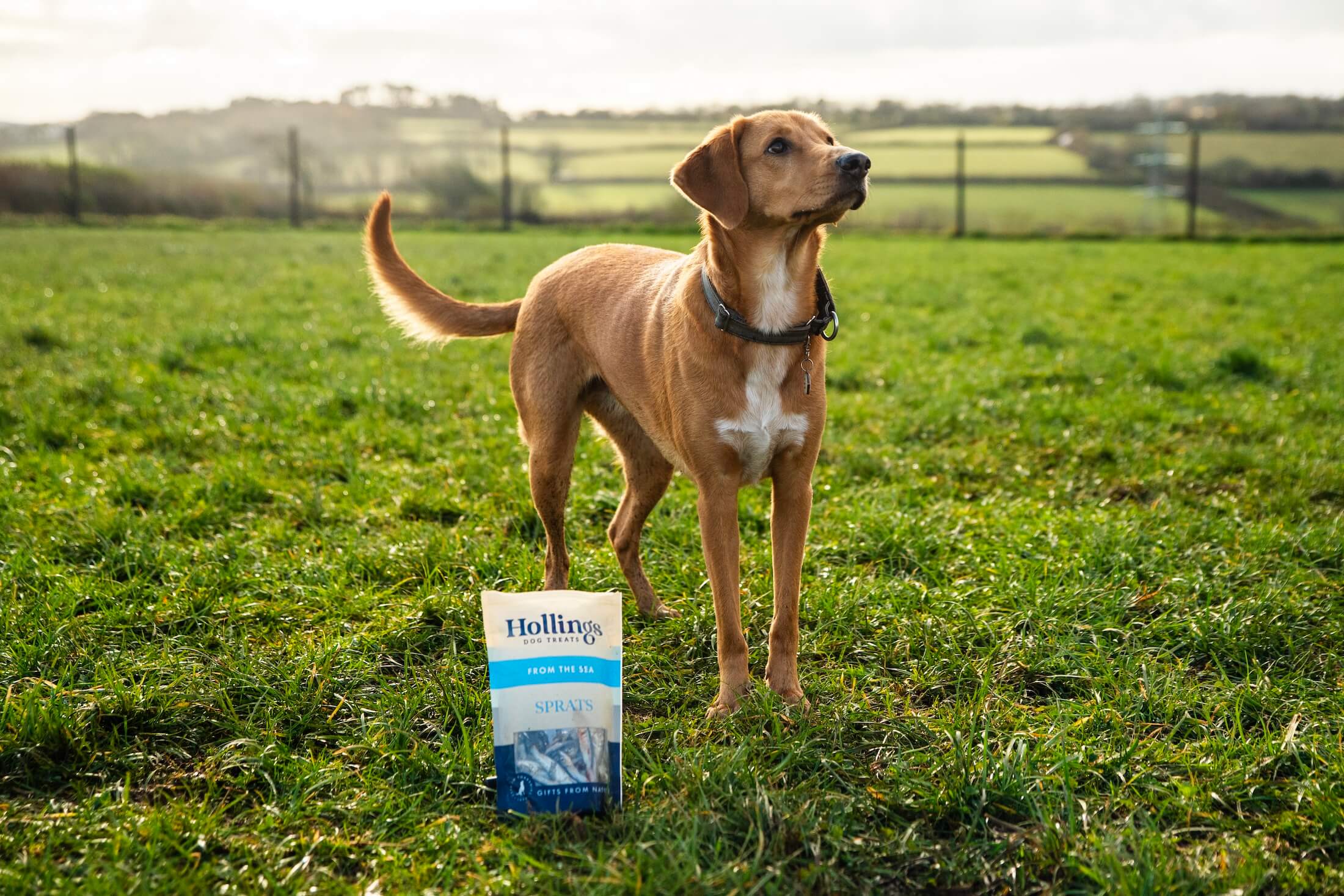At Hollings we know from firsthand experience that dogs are more than just pets; they’re family members who bring joy and companionship into our lives. One way a lot of dog owners show their love to their pet is by giving them treats to enjoy. However, it’s essential to understand the role of treats in a balanced diet and how to ensure they contribute to your dog’s overall health.
The role of treats in a balanced diet
Treats can play a vital role in your dog's diet, but moderation is key. Here’s how we advise fitting in them in:
-
Training tools: Treats can be an invaluable training tool as most dogs are motivated by food! Using delicious, low-calorie treats, like our Venison bites, can help keep training sessions productive without overindulging your pet.
-
Bonding experience: Treats are perfect for handfeeding, which helps to develop bonds. The process of feeding a treat by hand can become a focus for trust and can also be used as an opportunity to teach young dogs about being gentle when accepting treats.
-
Diet variety: Just like humans, dogs enjoy variety in their diets. Natural chews and treats can help you support your dog’s health & wellbeing, as many contain essential nutritional elements such as protein, fish oils and vitamins.
-
Adding excitement or interest: Smaller treats (like our Whitefish Bites) are perfect for stuffing into boredom-buster toys or using as a yummy topper on their usual meal. Our Fish Bites also have an abrasive texture to encourage chewing and help remove tartar from your dog’s teeth.
Ensure treats are counted in your dog’s nutritional requirements
-
Know your dog’s nutritional needs: Consider your dog’s age, size, and activity level. Puppies, active breeds, and older dogs have different nutritional requirements, so tailor treats and the regularity they are given accordingly.
-
Portion control: Treats should make up no more than 10% of your dog’s daily calorie intake.
-
Rotate treats: Keep things exciting by rotating between different types of treats. This not only keeps your dog interested but also helps with nutrient diversity. For example, you could swap out Chicken Hearts for Sprats to completely mix up flavours.
-
Choose quality ingredients: Look for treats made from high-quality, natural ingredients. Ideally, treats should be:
-
Rich in vitamins and minerals
-
100% natural
-
Made from pure meat, fish or quality plants
-
Easily digestible
-
Don’t go overboard: If something is given too much, it’s not a treat anymore.
-
Keep your dog active: Regular exercise helps burn off extra calories from treats, keeping their weight in check.
-
Be mindful: Instead of giving treats throughout the day, reserve them for training sessions or special moments.
-
Monitor weight: Regular vet check-ups can help you keep an eye on their overall weight and health to ensure they’re not gaining unnecessary weight.
Treats are a wonderful way to show your dog love and appreciation, but it’s crucial to integrate them thoughtfully into their diet. By understanding their role, creating a structured treat plan, and using healthy options, you can keep your dog happy without compromising their health.
Remember, a healthy dog is a happy dog, and with the right approach, you can ensure your best friend enjoys delicious treats while staying fit and active!



